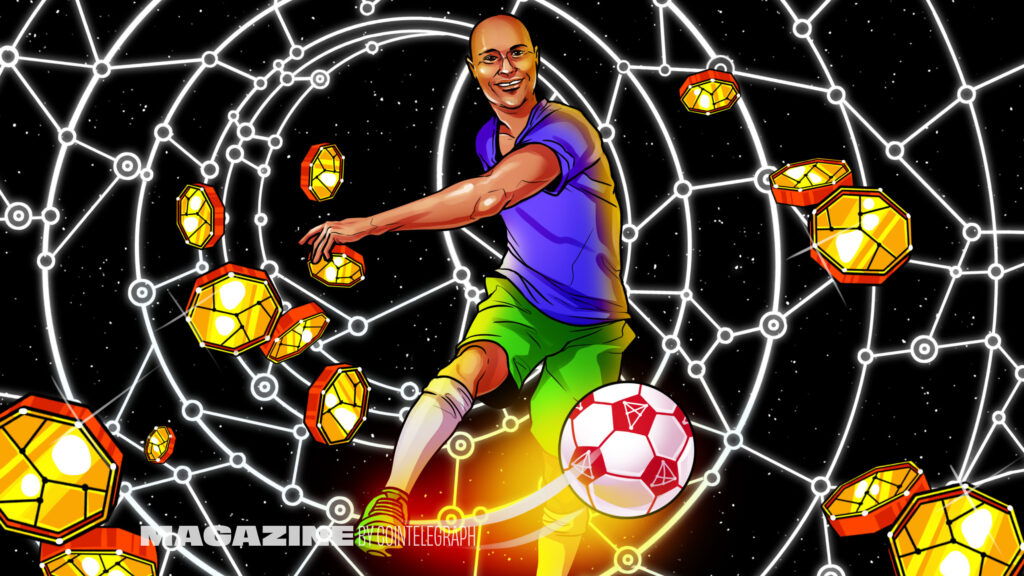
Our weekly roundup of news from East Asia curates the industrys most important developments.
Huobis disgruntled employees
According to local media reports, cryptocurrency exchange Huobi Global has terminated all year-end employee bonuses and benefits, as well as axed its entire core development staff located in mainland China. The laid-off staff will be instead switched to advisory contracts that do not receive protection under Chinese labor laws. Employees also claim that their leftover paid vacation days and sick leave days for 2022 were set to zero without prior notification.
Moreover, executives allegedly imposed a messaging ban on all major Huobi employee chat groups. In response, employees reported formed a 400-member strong rights maintenance group and have since sought the advice of counsel in the labor dispute. One employee reportedly wrote:
I love my company and my job; at the same time, I support all decisions that benefit the company, and I know that with economies recessionary everywhere in the globe, Huobi management staff must tighten their belts, and I can understand the lack of year-end bonuses. That said, I cannot accept the unreasonable swap of employment contracts. I will fight this to the end.
However, it appears that employees still received the short end of the stick. On Jan. 6, Cointelegraph reported that Huobi laid off 20% of its workforce while denying insolvency rumors. But at the time of publication, sources say that the exchange is operating at a loss of $10 million per month.
#Huobi seems to be melting down in real time, possibly along with His Excellency #JustinSun's fortune…
— M Cryptadamus | @cryptadamist@universeodon.com (@Cryptadamist) January 5, 2023
Shut down all intra-employee IMs etc, maybe fired a bunch of people. Employees now angry (or Sun is ruggin') @HuobiGlobal @justinsuntron https://t.co/0PGGHKtX8D pic.twitter.com/VioEzdRwVo
Founded by Chinese entrepreneurs Leon Li and Du Jun in 2013, Huobi relocated its registrar to Seychelles following Chinas Bitcoin ban. Last October, its founders reportedly sold 100% of their stake to Chinese blockchain personality Justin Sun, who also founded the Tron network and is the CEO of BitTorrent. Sun claims merely to be an adviser to Huobi, currently the 17th-largest cryptocurrency exchange worldwide by 24-hour trading volume.
MOBA games 100,000 downloads
Approximately one month after launch, SuperpowerSquad (SPS) has been downloaded from Google and Apples app stores more than 100,000 times, a spokesperson for the multiplayer online battle arena (MOBA) blockchain game told Cointelegraph.
The spokesperson said that the BNB Chain-based game, which had been in development for over two years, seeks to become a complete GameFi blockchain ecosystem, and the next steps include cross-bridge integrations and expanding the native token SQUADs utility to its second and third blockchain games in development.

The firm has already completed its mainnet and token launch and developed a built-in in-game wallet address that allows users to collect NFT hero rewards and digitized items. SPS currently has around 3,000 daily active users. The company is registered in the British Virgin Islands, with its core development staff based in Hong Kong and Singapore.
Dear Fighters!
— Superpower Squad (@Superpow_Squad) December 13, 2022
Superpower Squad officially LAUNCH NOW!!
Search for "Superpower Squad" in App Store/Google Play to start playing!
SPS in-game currency $ECG contract address: 0xB2d09c5723C2D8fcfC89AE50a6d8919dcb2C9aAd
https://t.co/JjQRZYnOTv
Let's go for it! pic.twitter.com/XQ0mJfRgO3
Bitmain unveils 122 TH/s Bitcoin miner
On Jan. 11, Beijing-based application-specific integrated circuit manufacturer Bitmain launched the new Antminer S19j Pro+. The company claims that the new Bitcoin miner is 10% more potent than the S19j Pro, with a hash rate of 122 terrahash per second. The firm states its now a truly global Antminer:
In addition to its excellent performance is its adaptability to most global data centers, with a new input voltage range of 220-277V. Given that the industrial electrical voltage in the United States is 277V, Kazakhstan 220-230V, and Russia 220V, the voltages in these three countries are within the coverage of 220-277V.
Although pricing has not been disclosed, the S19j Pro predecessor currently costs $1,842 without shipping via computer hardware retailer Newegg.

Digital yuan included in M0 figures
According to a Jan. 10 local news report, the Peoples Bank of China in December began including its digital yuan central bank digital currency (e-CNY) in official M0 money supply figures. Official data revealed that over 13.61 billion Chinese yuan ($2 billion) worth of e-CNY has been issued since the pilot program began in January last year. Over the past year, state developers have rolled out features such as offline and no-electricity-required payments. However, some officials say that adoption remains below expectations.
Researchers quantum digital signature
As reported by the Chinese technology website Lianmenhu, researchers Chen Zengbing and Yin Hualei at Nanjing University have successfully signed a digital file using a quantum digital signature framework. Using a combination of one-time hash and one-time pad encryption principles, researchers reportedly increased the signing rate by a factor of hundreds of millions. Unlike classical signatures, such as signing a document with a pen or public key encryption, quantum signatures are verified via quantum mechanics and theoretically cannot be forged. The university said:
The team demonstrated the worlds first full-featured quantum security network experimentally, realizing the protection of all elements of information security and providing a technically complete network and quantum safety base for the digital economies and digital currencies.
WangYis Lunar New Year metaverse
On Jan. 10, Shanghai Securities News reported that Chinese internet giant WangYi has partnered with state broadcaster China Central Television (CCTV) for a metaverse night special on the latters 2023 Chinese New Year program.
For this operation, WangYi mobilized its LeiHuo, FuXi, Entertainment AI Lab, and WangYi Blockchain departments, utilizing digital twinning, blockchain, AI digital art, and AI sound technologies, to create the first Chinese New Year metaverse concert that can support tens of thousands of audiences, the outlet reported.
The WangYi metaverse platform reportedly features a 30 km digital water space where users can follow the official CCTV New Years program, participate in concerts and launch fireworks. WangYi also said it would spread its audience across multiple parallel universes (i.e. servers) to reduce lag and enhance multiscreen streaming.

Thailand SEC probes Zipmex
On Jan. 11, Cointelegraph reported that Thai cryptocurrency exchange Zipmex is facing a probe by the countrys Securities and Exchange Commission alleging a breach of local rules.
On Dec. 2, Thai VC fund V Ventures announced that it had acquired the exchange for $100 million. On July 20, the company paused user withdrawals just moments after its CEO denied financial trouble rumors. The exchange has asked for a credit protection extension in Singapore pending the acquisition.











































